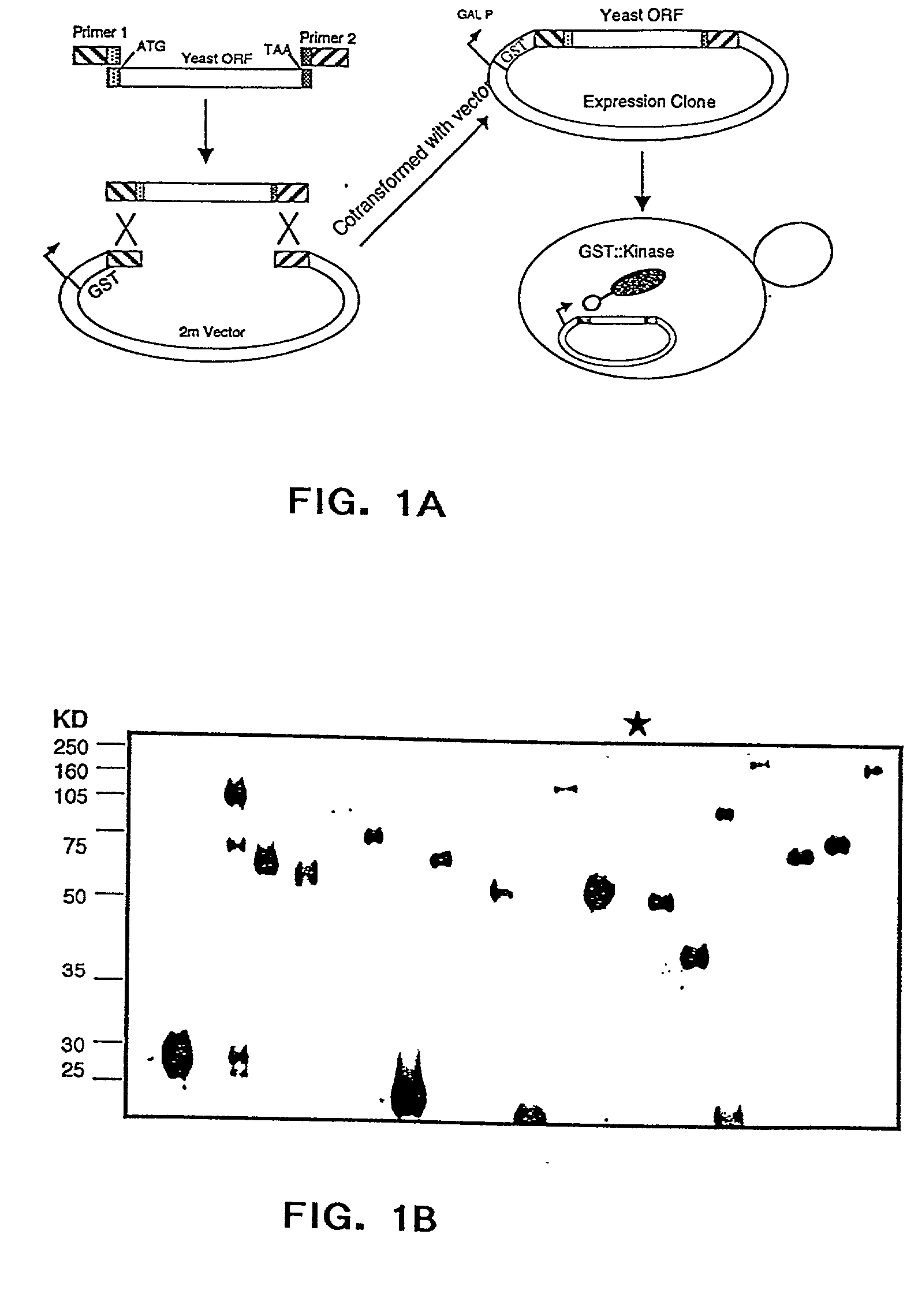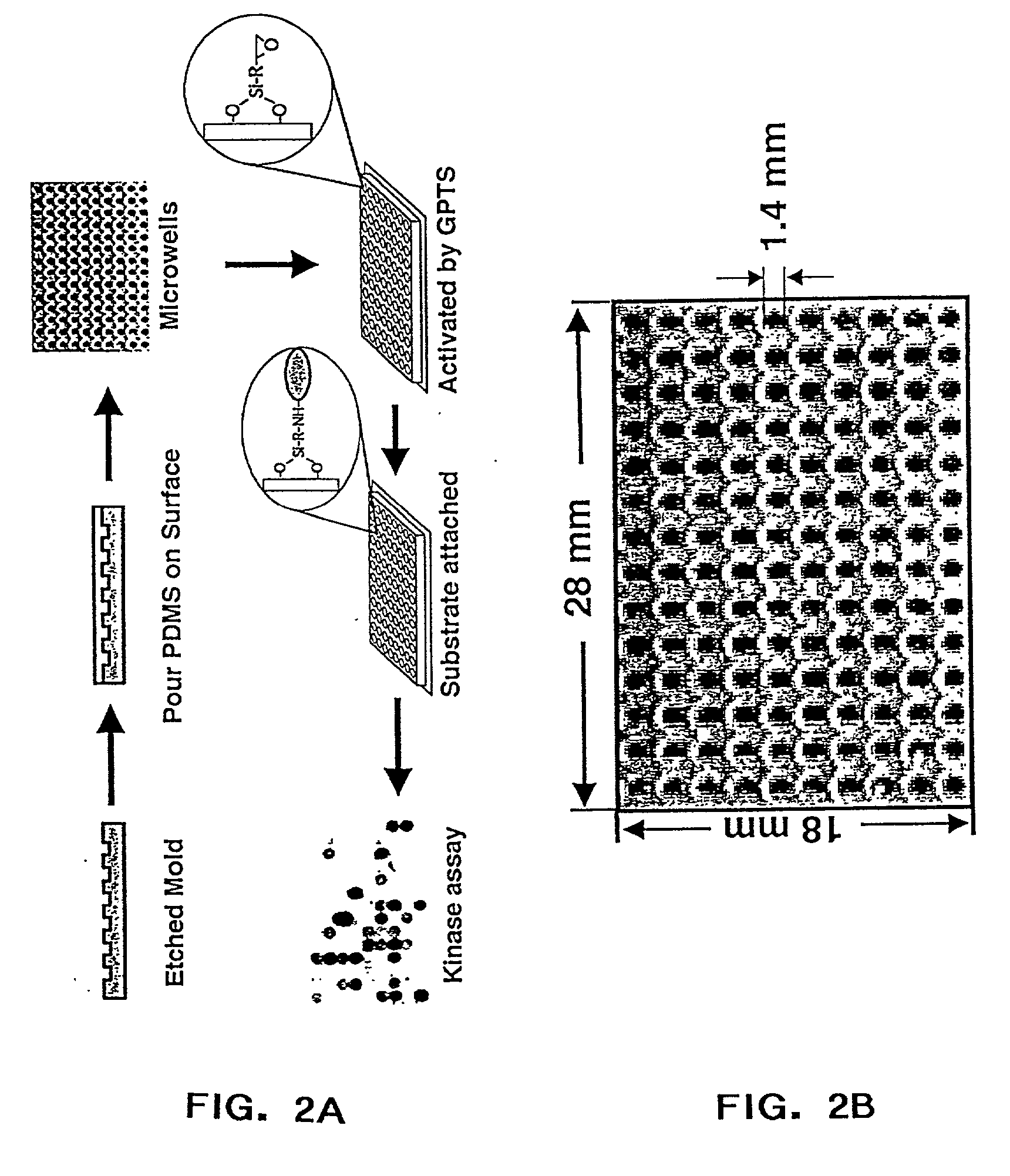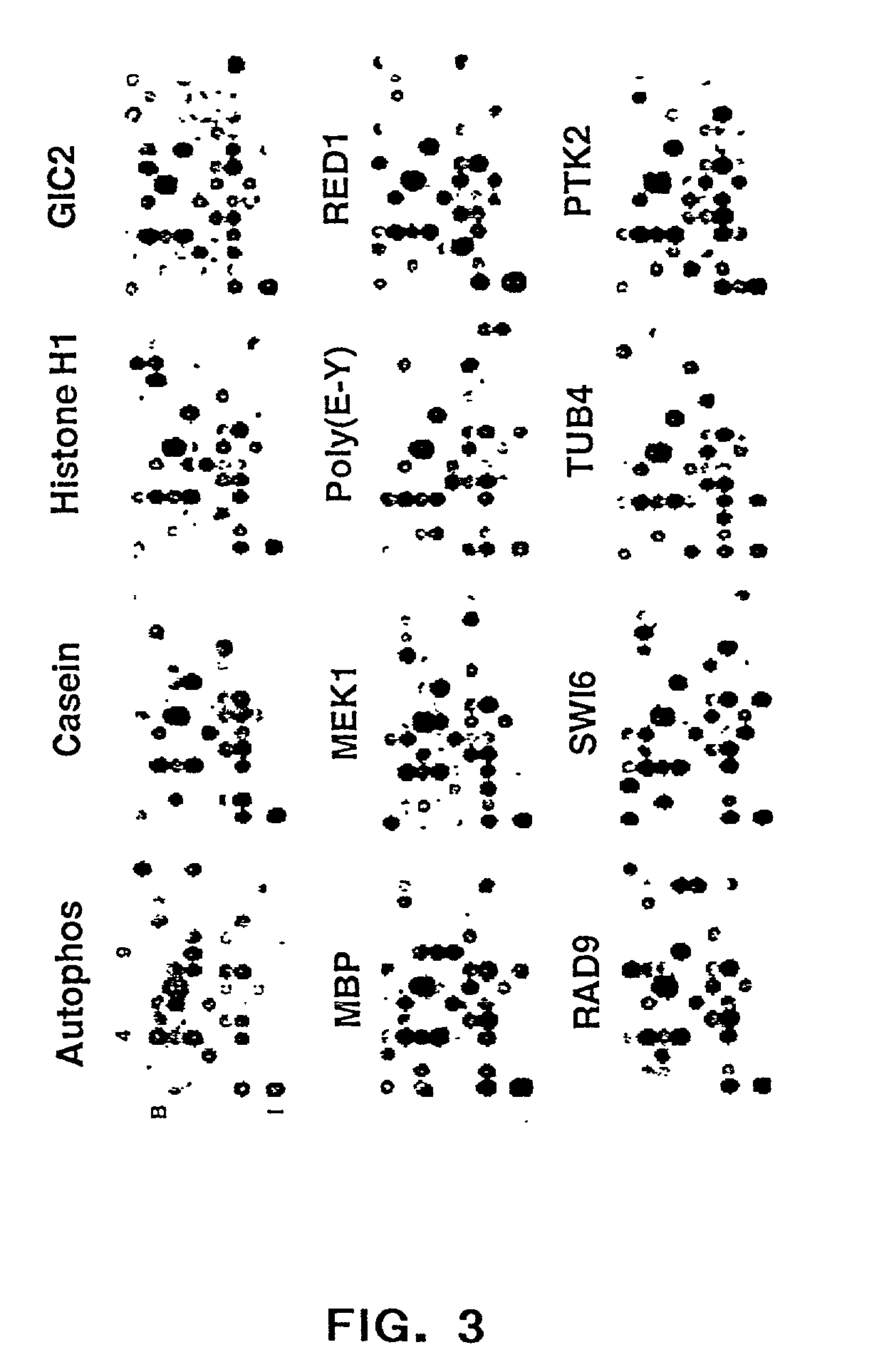Protein chips for high throughput screening of protein activity
a protein activity and protein technology, applied in the field of protein chips, can solve the problems of unsuitable large-scale protein analysis, time-consuming process, arrays are unsuitable for discrete volume protein analysis,
- Summary
- Abstract
- Description
- Claims
- Application Information
AI Technical Summary
Benefits of technology
Problems solved by technology
Method used
Image
Examples
example i
VI. EXAMPLE I
Analysis of Yeast Protein Kinases Using Protein Chips
[0123] A. Introduction
[0124] The following example exemplifies the various aspects of protein chip production and a method of using the protein chips of the present invention. The protein chip technology of the present invention is suitable for rapidly analyzing large numbers of samples, and therefore this approach was applied to the analysis of nearly all yeast protein kinases. Protein kinases catalyze protein phosphorylation and play a pivotal role in regulating basic cellular functions, such as cell cycle control, signal transduction, DNA replication, gene transcription, protein translation, and energy metabolism.sup.7. The availability of a complete genome sequence makes it possible to analyze all of the protein kinases encoded by an organism and determine their in vitro substrates.
[0125] The yeast genome has been sequenced and contains approximately 6200 open reading frames greater than 100 codons in length; 122 ...
example ii
VII. EXAMPLE II
Analysis of Yeast Protein Kinase Activity Using Protein Chips
[0214] A. Introduction
[0215] The following example presents three protocols that, for illustration purposes only, provide different methods of using the protein chips of the present invention to assay for protein kinase activity.
[0216] 1. Assay Methods for Protein Kinase Activity
[0217] i. Autophosphorylation Activity
[0218] (1) Protein chips were washed three times with 100% EtOH at room temperature. The chips were then coated with the linker GPTS (1% in 95% EtOH) at room temperature for one hour with shaking. After washing with 100% EtOH three times, the chips were dried at 130.degree. C. for 1.5 hours under vacuum.
[0219] (2) GST::yeast protein kinases, one kinase species per well, were bound to the wells of the protein chip by incubation for at least one hour. The chip was further blocked by 1% BSA.
[0220] (3) Kinase buffer and a .sup.33P-.gamma.-ATP probe was added to each well, and incubated at 30.degree. ...
example iii
VIII. EXAMPLE III
Analysis of Protein-Protein Interactions Using Protein Chips
[0233] A protein of interest ("probe protein") is recombinantly expressed in and purified from E. coli as a labeled fusion protein using standard protocols. The target proteins are attached to the wells of the chip, with a different target protein in each well. The purified probe protein is introduced into each well of the chip, and incubated for several hours or more. The chip is washed and probed with either: a) antibodies to the probe protein, or b) antibodies to the label on the fusion protein. The antibodies are labeled with a fluorescent label, such as Cy3 or Cy5, or are detected using a fluorescently labeled secondary antibody that detects the first antibody.
[0234] The following examples provide, for illustration purposes only, methods of using the protein chips of the present invention to assay for proteases, nucleases, or G-protein receptors. Protein-protein interactions generally can be assayed us...
PUM
| Property | Measurement | Unit |
|---|---|---|
| volumes | aaaaa | aaaaa |
| volumes | aaaaa | aaaaa |
| volumes | aaaaa | aaaaa |
Abstract
Description
Claims
Application Information
 Login to View More
Login to View More - R&D
- Intellectual Property
- Life Sciences
- Materials
- Tech Scout
- Unparalleled Data Quality
- Higher Quality Content
- 60% Fewer Hallucinations
Browse by: Latest US Patents, China's latest patents, Technical Efficacy Thesaurus, Application Domain, Technology Topic, Popular Technical Reports.
© 2025 PatSnap. All rights reserved.Legal|Privacy policy|Modern Slavery Act Transparency Statement|Sitemap|About US| Contact US: help@patsnap.com



